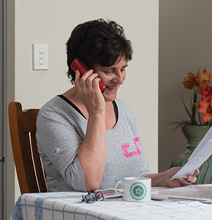
On 18 January AGE participated at the annual gathering of the French Club Landoy in Paris. The Club Landoy gathers companies and organisations committed to developing new approaches and innovative solutions for making the most of demographic change and achieving social progress.
Under the title ‘Toward a new social contract’, the event included 6 round-table discussions bringing together institutional leaders, company directors, economists, journalists and members of civil society. They debated key issues related to the employability of older people: new professions and skills, the quest for meaning, commitment, inclusion of all generations, the physical and mental health of employees, value sharing, etc.
Our President, Heidrun Mollenkopf, was invited to share AGE’s view on these issues.
Acknowledging challenges
The change in population structure, due to low birth rates and increasing longevity, has a significant impact on the labour market and the employment of older people has become key to ensuring productivity, as AGE President explained. Yet, despite this urgency, the employment rate of older people remains very low in the European Union.
“Today 2/5 of older persons aged 55 to 64 do not work in the European Union and it is even 3/5 for older women in some countries.”
Among the main reasons for the low employment rate of older people are :
- Ageism and age discrimination. The negative prejudices towards older people are a major barrier to employment, also reducing the opportunities for lifelong learning and training.
- The lack of support to older job seekers and long-term unemployed.
- The lack of adaptation of workplaces and working conditions to groups of all ages.
Heidrun Mollenkopf also highlighted the legacy of cumulative discrimination across the life course that creates group-specific challenges. This is, for instance, the case of older women, who have spent more time on caring during their careers than men, also in old age. This results in greater challenges in remaining or finding employment, and in a significant gender-pension gap.
Good practice for win-win solutions
To retain and develop the older workforce, measures must be implemented that benefit companies, older workers and their families. AGE President picked up some examples from the 2023 AGE Barometer, published last November and which focused on employment. The Barometer takes stock of the situation of older workers in 19 European Member States and collects good practices to support sustainable and quality working lives.
AGE Barometer shows that there is a need for:
> Recognizing the experience, value, and full potential of older people in the workplace
This can be done with the support of charters such as the one proposed by the Club Landoy, or through the implementation of age equality strategies at national, sectoral and/or company levels.
In Germany, the Demography Network Association, set up by the Federal Ministry of Labour and Social Affairs, gives space for cross-companies exchanges of good practices to develop sustainable and successful employment strategies within companies.
> A person-centered and intersectional approach.
This approach would enable companies to respond adequately to the needs of employees and older workers/job seekers.
Such a model has been developed in Italy thanks to the Guarantee of Employability of Workers programme with the support of the European Union.
Regarding to intersectional discriminations faced by older women, the Swedish model is inspiring with its pack of measures providing special support to women throughout their lives. These measures, which address women’s right to work, autonomy and work-life balance, successfully impact the position of older women in the labour market, as Sweden remains the best-performing country in the EU with an employment rate for women of 78%, approaching the employment rate for men.
> Workplaces that are designed, conceived and accessible for all ages
Stronger Occupational Safety and Health (OSH) policies and specific flexible working arrangements are needed here. The EU Work-life Balance Directive introduces a set of legislative actions aiming (among others) at better supporting a work-life balance for parents, but also for carers.
As a conclusion, AGE President underlined the wide scope of measures needed to address the various respects of employment for older people.
“This requires a strong commitment from employers and companies and co-operation with older people themselves or their representatives. As AGE Platform, we are happy to contribute to this endeavour to the best of our ability”.
Heidrun Mollenkopf, President of AGE Platform Europe
Contact

Sarah Loriato
Policy Officer on Employment and European Parliament Liaison






